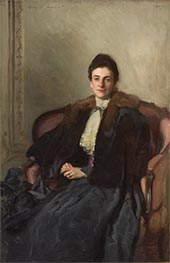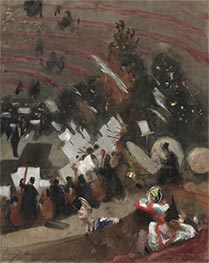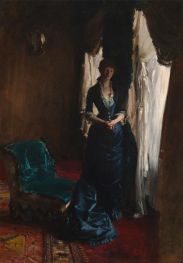
John Singer Sargent Painting Reproductions 12 of 12
1856-1925
American Impressionist Painter
272 Sargent Paintings

Stable at Cuenca 1903
Oil Painting
$1054
$1054
Canvas Print
$73.36
$73.36
SKU: SAR-18167
John Singer Sargent
Original Size: 57.2 x 72.1 cm
Smithsonian American Art Museum, Washington, USA
John Singer Sargent
Original Size: 57.2 x 72.1 cm
Smithsonian American Art Museum, Washington, USA

Portrait of Mrs. Harold Wilson 1897
Oil Painting
$1550
$1550
Canvas Print
$61.76
$61.76
SKU: SAR-18982
John Singer Sargent
Original Size: 152.5 x 96.5 cm
Fuji Art Museum, Tokyo, Japan
John Singer Sargent
Original Size: 152.5 x 96.5 cm
Fuji Art Museum, Tokyo, Japan

Rehearsal of the Pasdeloup Orchestra at the ... c.1879
Oil Painting
$940
$940
Canvas Print
$74.21
$74.21
SKU: SAR-19004
John Singer Sargent
Original Size: 93 x 73 cm
Art Institute of Chicago, Illinois, USA
John Singer Sargent
Original Size: 93 x 73 cm
Art Institute of Chicago, Illinois, USA

Madame Paul Escudier (Louise Lefevre) 1845
Oil Painting
$1333
$1333
Canvas Print
$65.19
$65.19
SKU: SAR-19669
John Singer Sargent
Original Size: 129.5 x 91.4 cm
Art Institute of Chicago, Illinois, USA
John Singer Sargent
Original Size: 129.5 x 91.4 cm
Art Institute of Chicago, Illinois, USA

Two Girls Fishing 1912
Oil Painting
$1171
$1171
Canvas Print
$72.34
$72.34
SKU: SAR-19689
John Singer Sargent
Original Size: 56 x 71.5 cm
Cincinnati Art Museum, Ohio, USA
John Singer Sargent
Original Size: 56 x 71.5 cm
Cincinnati Art Museum, Ohio, USA